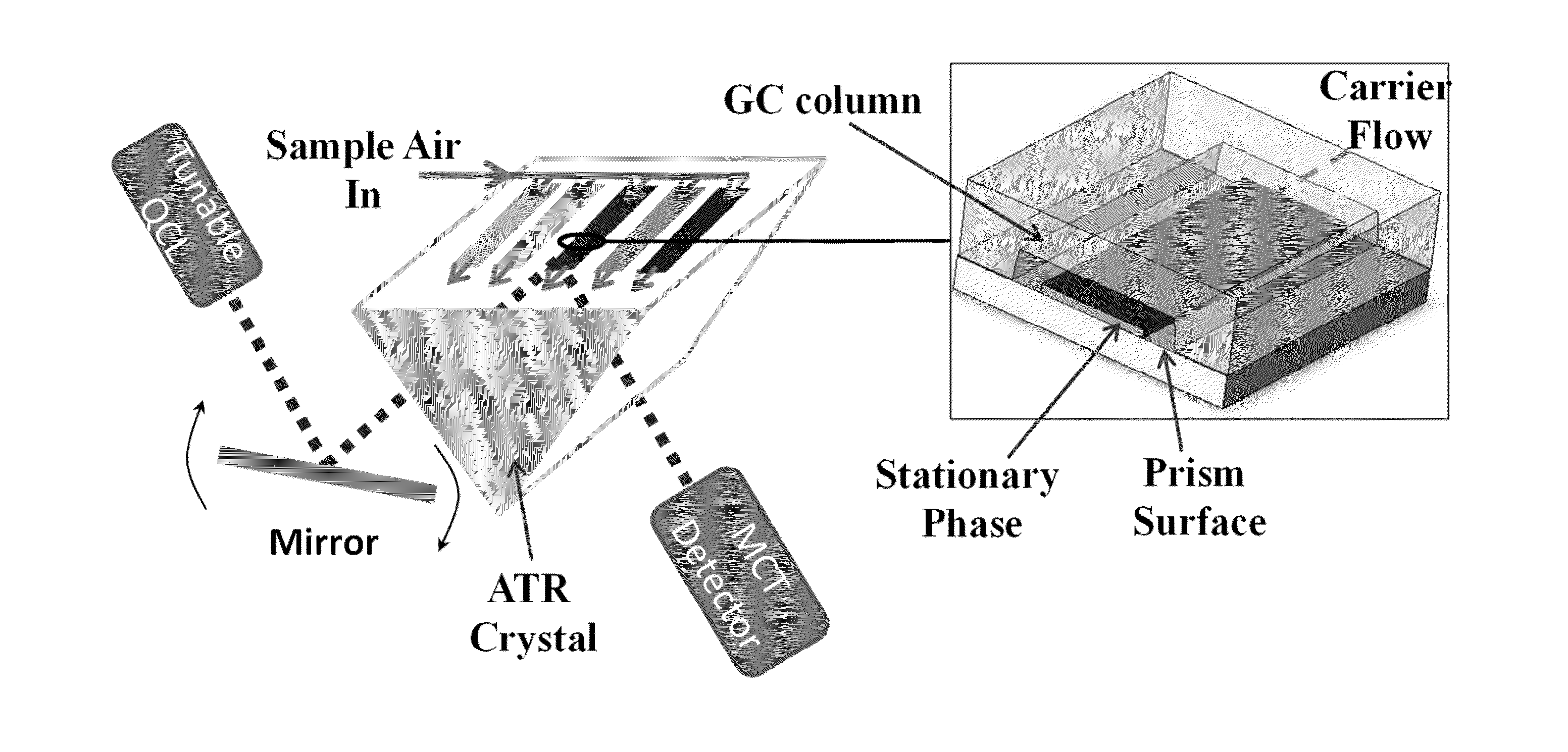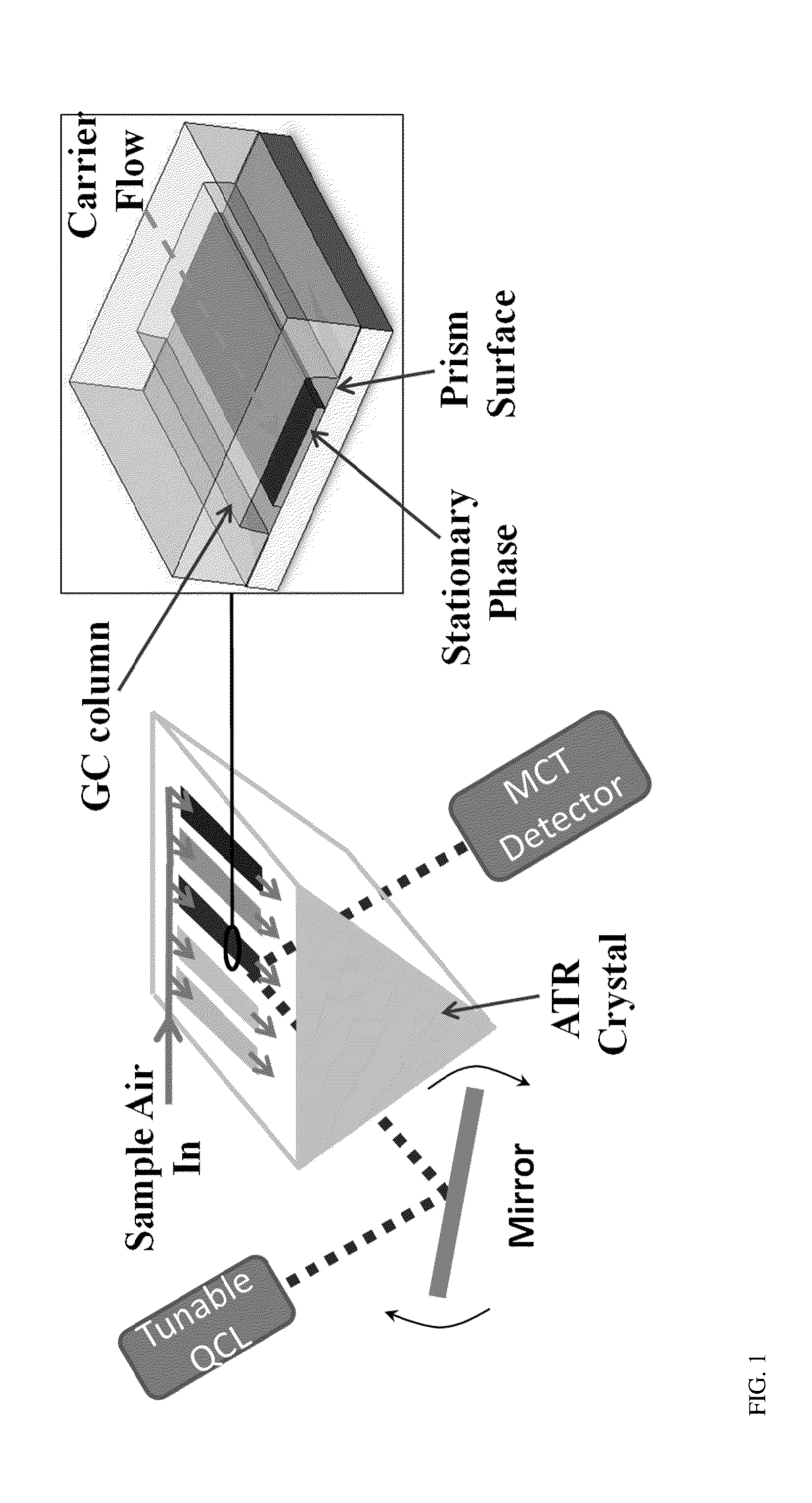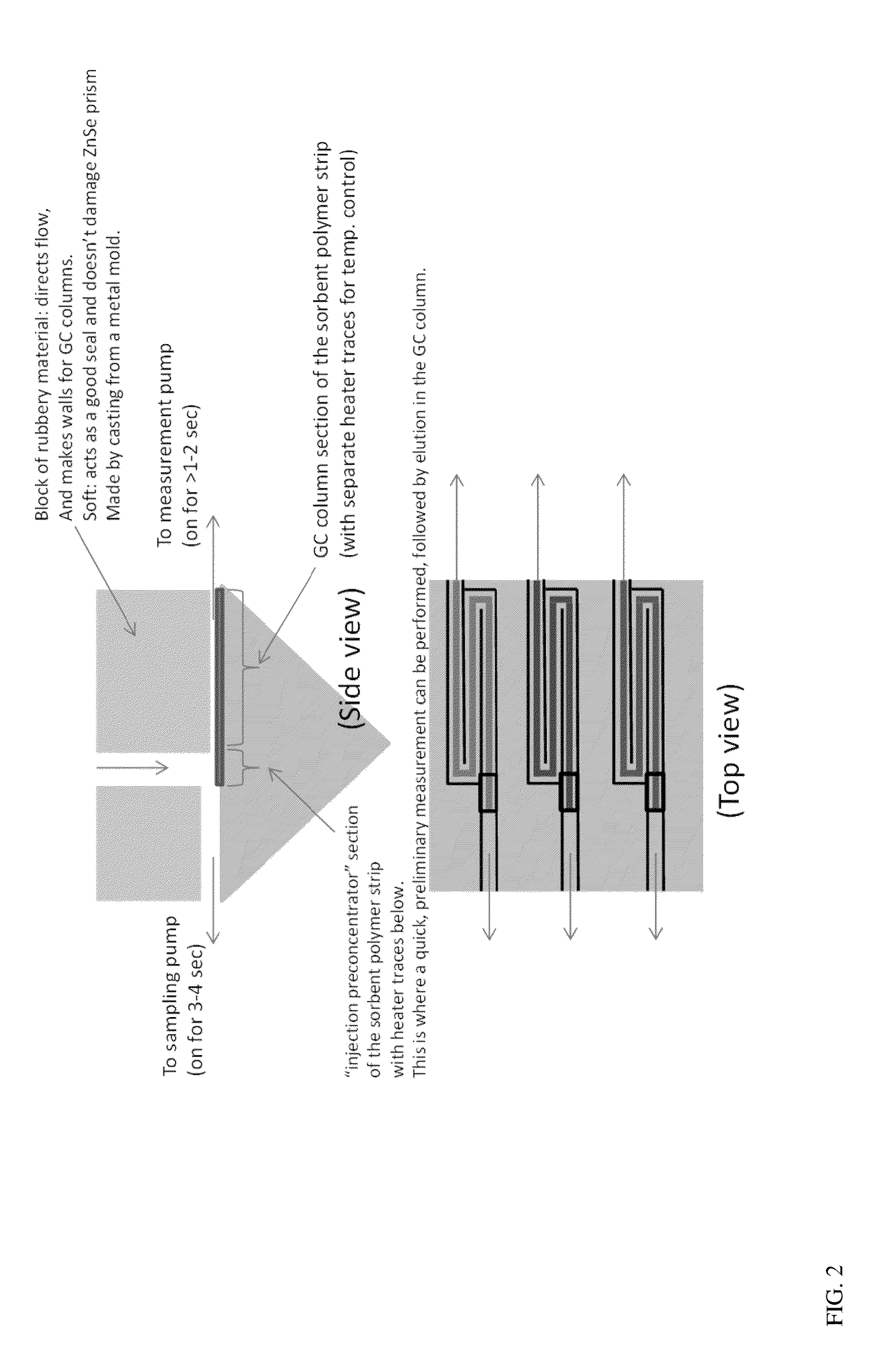Gas chromatographic "in column" spectroscopic analysis
a gas chromatographic and in-column spectroscopy technology, applied in the field of ir detectors, can solve the problems of low sensitivity and poor selectivity derived from incident ir light, and achieve the effects of reducing unnecessary wait time, avoiding unnecessary peak spreading, and increasing sensitivity
- Summary
- Abstract
- Description
- Claims
- Application Information
AI Technical Summary
Benefits of technology
Problems solved by technology
Method used
Image
Examples
Embodiment Construction
[0021]The purpose of the present invention is to provide a general framework to optimize molecular affinity and analyte discrimination for a large group of chemicals by employing a set of sorbent chemistries, chromatographic separations and “in-column” detections using infrared light to probe and access molecular information.
[0022]The analytical separation power of multimodal gas chromatographic (GC) columns, operated in a parallel format, is combined with IR absorption spectroscopy used to monitor analytes during their chromatographic progression “in-column”. Sensitivity and selectivity are augmented by incorporating selective sorbents as GC stationary phases to target CWAs and TICs through reversible binding analyte or chemical reactions between an analyte and a stationary phase. An ultra-bright tunable IR laser, such as a quantum cascade laser (QCL) or other bright IR light source provides a dramatic increase in photon density to probe the chemistries involved. By design, IR inte...
PUM
| Property | Measurement | Unit |
|---|---|---|
| wavelength range | aaaaa | aaaaa |
| infrared-transparent | aaaaa | aaaaa |
| hydrogen bond acidic | aaaaa | aaaaa |
Abstract
Description
Claims
Application Information
 Login to View More
Login to View More - R&D
- Intellectual Property
- Life Sciences
- Materials
- Tech Scout
- Unparalleled Data Quality
- Higher Quality Content
- 60% Fewer Hallucinations
Browse by: Latest US Patents, China's latest patents, Technical Efficacy Thesaurus, Application Domain, Technology Topic, Popular Technical Reports.
© 2025 PatSnap. All rights reserved.Legal|Privacy policy|Modern Slavery Act Transparency Statement|Sitemap|About US| Contact US: help@patsnap.com



